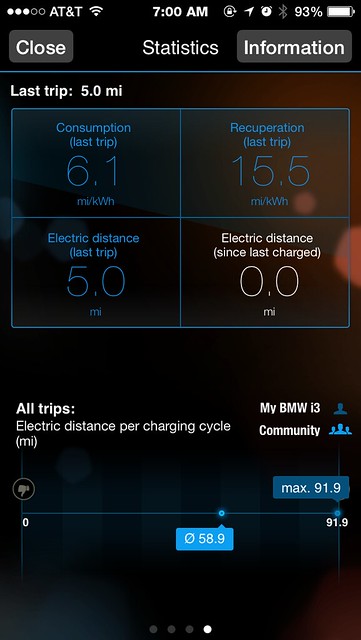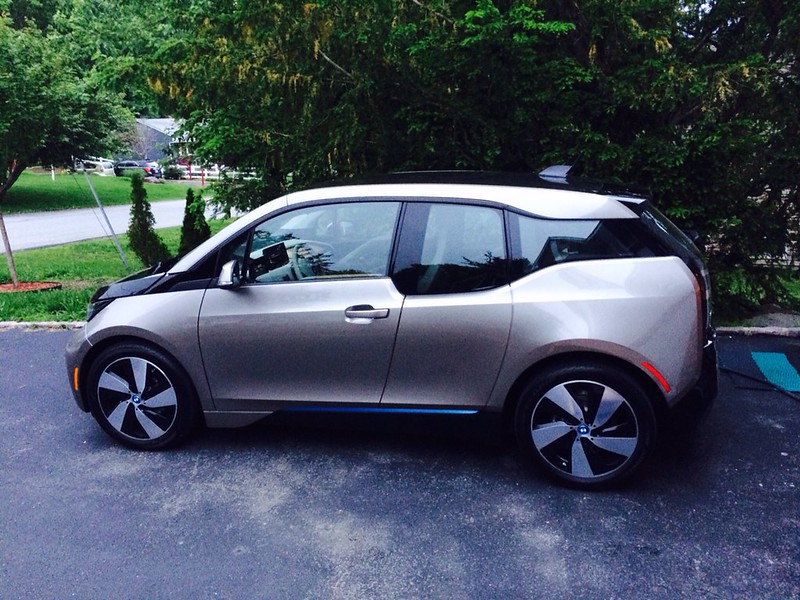Gonville
Well-known member
stumbledotcom said:.....Or maybe UK roads really are that bad.
They are. With run flats you have to be looking for every single pothole and if you hit one you need to visit the dentist.

stumbledotcom said:.....Or maybe UK roads really are that bad.
I don't see why it's thought that heavy acceleration (using the available torque) greatly reduces the available range ("at an alarming rate").The fact the i3 is fun to drive is perhaps it's achilles heel because the range goes down at an alarming rate if you use its available torque at the lights.
Fear not! It's DEFINITELY true. A-level physics. Yippee!sasman said:I hope this is true...it sounds too good to be true..i think i have read on this forum that you can accelerate with no extra power consumption ..
FrancisJeffries said:So we can use all the torque on offer happy to know that it comes at no extra range cost. :lol:
FrancisJeffries is correct, of course. "Definitely true." It is the best kept secret of early adopters. We can accelerate an EV balls-out, guilt free, and free of worry about impacting range. There are a couple cases to be made, but with a caveat.FrancisJeffries said:Fear not! It's DEFINITELY true. A-level physics. Yippee!sasman said:I hope this is true...it sounds too good to be true..i think i have read on this forum that you can accelerate with no extra power consumption ..
(And I speak as a Chartered Engineer.)



Agreed. But that penalty is quite low.fdl1409 said:Full power acceleration is not quite without penalty.
That depends on your point of view. Compared to lead-acid battery performance, it's low. Compared to a more ideal case, it's not. The total heat losses are about 10% of the power output generated by the motor. This is supported by empirical observation at electric car races as well. While the internal resistance of lithium-ion batteries is relatively low, it's not zero.ultraturtle said:Agreed. But that penalty is quite low.
The rate of acceleration does not affect the amount of battery charge used, as I showed in my first post on this topic. What counts is the total velocity increment.if you were to do a zero to sixty acceleration every four minutes of an 80 minute drive to depletion of the useable capacity (18.8 kWh), you would be expending less than an additional 4% of battery capacity (or range) by accelerating twice as quickly each time.


There is a maintenance mode in the REx. It will operate the engine at certain intervals automatically.CompuMagic said:)The most I have gone is 91 miles, with 11 remaining (and another person in the car with me), and the gas generator has never come on for me yet. Perhaps I need to in order to prevent stale gas.
My range anxiety is much less than it was when I first started driving the i3.
Zzzoom3 said:There is a maintenance mode in the REx. It will operate the engine at certain intervals automatically.CompuMagic said:)The most I have gone is 91 miles, with 11 remaining (and another person in the car with me), and the gas generator has never come on for me yet. Perhaps I need to in order to prevent stale gas.
My range anxiety is much less than it was when I first started driving the i3.
Zzzoom3 said:There is a maintenance mode in the REx. It will operate the engine at certain intervals automatically.CompuMagic said:)The most I have gone is 91 miles, with 11 remaining (and another person in the car with me), and the gas generator has never come on for me yet. Perhaps I need to in order to prevent stale gas.
My range anxiety is much less than it was when I first started driving the i3.
CompuMagic said:I have over 1650 miles in my i3 REx (fully loaded Giga), having bought it off the showroom floor on May 28th in the Hudson Valley, NY, USA.
I have floored it a few times. When in comfort mode it is the most responsive. With 3 other people in the car with me, demonstrating its power in comfort mode, for just a small stretch, 0 to 50, basically blew their minds. It is simply amazing. I compare it to a mag-lev ride at an amusement park like Six Flags. You really feel it kick you in the back! Zoooooooooommmm!!!!!!
I have several times put the pedal to the metal in order to get out of a bad traffic situation and it is quite practical in that respect. I have also shown off a few times, just to demonstrate to very curious onlookers or people who actually started asking me about the vehicle in parking lots and sometimes on the road at stop signs or lights. I was not able to look back to see their jaws drop but I am sure they did.
If you are in ECO PRO+ mode and floor it, it is not as snappy but it is still very quick and at 55MPH is starts to warn you and still lets you exceed 55 but gives you feedback in the way of a slight hesitation (as noted by Tom in one of his early posts). I always drive the car in ECO PRO + mode unless I am demonstrating or absolutely have to have the air conditioner going (ECO PRO mode is good enough for that). I often have my windows cracked an inch or so instead of using the air conditioner or even the fans. The iPhone app is very useful in showing your driving stats too. My stats are pretty good compared to the "community" which it shows on various graphs.
It is currently in the shop getting the software update to fix the check engine light. Apparently it is quite a process, having headquarters remotely connected to the vehicle to perform the update. They warned me it could take up to 3 days. I believe it will only be 2.
The car is a pure joy to drive. And I drive it very conservatively, at or under the speed limits and milking that regenerative braking and glide mode for all it's worth. I love when the miles remaining actually go UP as I drive (depending on terrain, speed, etc). The most I have gone is 91 miles, with 11 remaining (and another person in the car with me), and the gas generator has never come on for me yet. Perhaps I need to in order to prevent stale gas.
My range anxiety is much less than it was when I first started driving the i3.


Enter your email address to join: